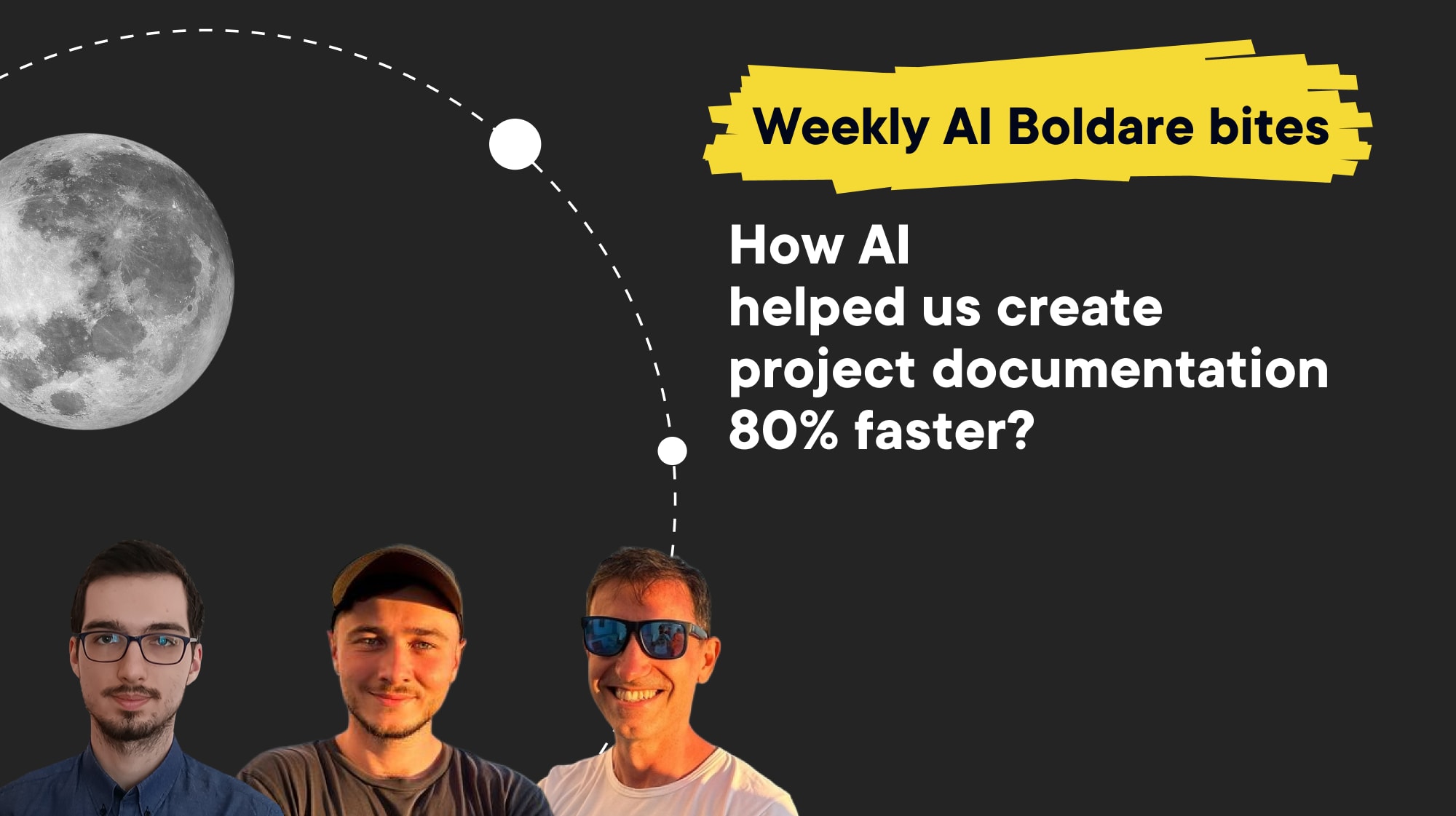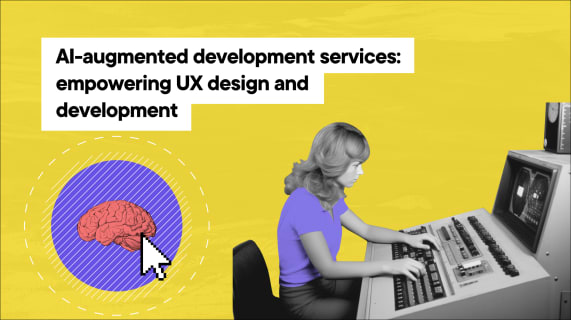From 60 minutes to 10: speeding up documentation with AI
AI is everywhere – but what’s it really like on the frontlines of AI implementation? Get into the daily thoughts and challenges faced by AI engineers – the real stuff that happens when AI meets digital products.
Weekly AI Bites is a series that gives you direct access to our day-to-day AI work. Every post comes straight from our team’s meetings and Slack, sharing insights, tests, and experiences we’re applying to real projects. What models are we testing, what challenges are we tackling, and what’s really working in products? You’ll find all of this in our bites. Want to know what’s buzzing in AI? Check out Boldare’s channels every Monday for the latest weekly AI Bite.

Table of contents
*This article was created by Przemysław Polak, Szymon Kopa, and Karol Kasprzak.*
Every software team knows the struggle: balancing clean, efficient code, hitting deadlines, and keeping documentation up to date. Writing docs for every new feature often feels endless, draining time and energy that could otherwise go into actual development. The more effort spent on writing descriptions, the less is left for building features that add real value.
So, how can we ease the workload without losing quality?
We looked into AI solutions to optimize the process. The outcome was impressive: an 80% reduction in documentation time, five times higher accuracy and relevance, and all of it delivered at a fraction of the original cost.
Coding vs. documentation
Our client had strict expectations. Documentation was an essential KPI, and even though the process was standardized, it caused pain points. The team relied on Word, which limited collaboration and made version control complicated. Preparing docs for a single feature took 45–60 minutes — a huge inefficiency when the focus was meant to be speed and delivery.
How we automated documentation with AI?
AI turned out to be the ideal way to streamline documentation and improve efficiency. We designed a setup where AI handles most of the repetitive groundwork. Here’s the breakdown:
- Generating content from code: AI tools, such as advanced code completion, read through the source code (controllers, modules, cron jobs, adapters) and automatically produce documentation. Instead of manually writing explanations for every feature, the team now gets auto-generated drafts to refine and improve.
- Markdown for flexibility: We moved away from heavy Word files and switched to Markdown. It’s lightweight, version-friendly, and works perfectly with repositories. Edits appear immediately, collaboration is smoother, and updates are faster. With AI added into the workflow, managing documentation became simpler and far less error-prone.
- PDF exports for client delivery: Using a script, we automatically convert Markdown into PDF, formatted exactly as the client requires. This eliminates manual styling and ensures consistent results.
The benefits we achieved
The most visible change came with time. Preparing documentation used to be a slow, manual process, often stretching to nearly an hour for a single feature. Now, the same work can be completed in just 5–10 minutes. That shift means developers can dedicate the majority of their time to coding, while documentation becomes a quick, almost seamless step in the workflow rather than a roadblock.
The financial impact was just as striking. Because the process is so much faster and lighter, the cost of producing documentation for one feature dropped to under one dollar. For projects with dozens or even hundreds of features, this translates into significant long-term savings.
Building and testing the system didn’t require a major investment either. We managed to design, implement, and validate the entire approach for only $15–30. In other words, the solution paid for itself almost immediately, both in terms of money and developer hours.
But perhaps the most valuable outcome was the new starting point AI provided. Instead of staring at an empty document, developers begin with an automatically generated draft based on the code itself. These drafts may not be final, but they offer a strong foundation that can be quickly refined and customized. That shift reduces friction, lowers the mental load, and ensures that the team can consistently produce documentation that matches the project’s needs without slowing down development.
Where AI still falls short?
While the results were impressive, the system is not flawless. Sometimes the AI leans too heavily on detail, producing descriptions that feel longer than they need to be. In this project, the strict formatting rules imposed by the client also limited how useful the documentation was for day-to-day work within the team. Another challenge is timing: the best documentation comes when it’s generated in real time, as the feature is being built. If that step happens too late, the quality quickly suffers.
What’s next for AI-driven documentation?
The journey doesn’t end with our first success. Building on what we’ve achieved, we see clear opportunities to take this approach further. One of our goals is to make documentation fully automatic — every change in the codebase would immediately generate matching documentation, much like continuous integration ensures that new code is instantly tested and deployed.
We also want to better understand how teams actually use documentation. By monitoring usage patterns, we can fine-tune the content so it reflects what the team truly needs, rather than simply following a rigid template.
Finally, our vision is to make this system scalable beyond a single project. By adapting the solution for different contexts and organizations, we hope to encourage a broader adoption of AI in development workflows, allowing more teams to benefit from faster, more reliable documentation.
Conclusion
This case shows how AI-driven coding tools can help teams save time, cut costs, and raise the overall standard of their work. When repetitive tasks are handled by automation, developers are free to focus on what matters most — building features and solutions that bring real value to clients and users. Technology in this context doesn’t just support the process; it actively accelerates it.
Bringing AI into development workflows means less time lost to routine work, more room for creativity, and faster delivery cycles. The partnership between human expertise and AI capabilities is opening the door to more efficient, innovative, and higher-quality software development. Looking ahead, AI will continue to grow as a trusted partner in coding, making the role of software engineers even more dynamic and impactful.
Share this article:





